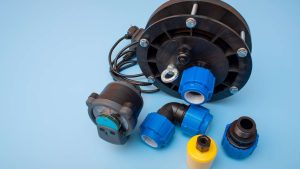Knowing the acceptable runtime for sewage pumps is crucial for optimal performance and durability. Monitoring runtimes helps detect issues early and maintain efficiency. Factors like pump size, water volume, and distance affect runtime. Calculating appropriate runtimes prevents wear and damage, saving energy costs. Exceeding limits can lead to breakdowns and increased strain on components. Regular maintenance, based on operating hours, prolongs pump life. Understanding the importance of runtime sets the foundation for a reliable sewage system. Discover more insights on maximizing pump efficiency and longevity by exploring further.
Importance of Monitoring Pump Runtimes
Monitoring pump runtimes is crucial for ensuring the efficient operation and longevity of your sewage pump system. By keeping track of how long your pumps are running, you can detect any irregularities or potential issues early on, preventing costly repairs or replacements. Regularly monitoring pump runtimes allows you to stay proactive in maintaining your system’s performance and efficiency.
Understanding the typical runtime patterns of your sewage pumps helps you establish a baseline for comparison. Deviations from this baseline could indicate problems such as clogs, leaks, or pump inefficiencies. By tracking runtimes, you can identify these issues promptly and take corrective actions before they escalate, saving you both time and money in the long run.
Additionally, monitoring pump runtimes enables you to schedule maintenance tasks effectively. By having a clear picture of how often and for how long your pumps are running, you can plan maintenance activities like inspections, cleanings, or part replacements to coincide with your system’s needs. This proactive approach minimizes downtime and ensures that your sewage pump system operates smoothly and efficiently.
Factors Affecting Pump Runtime
Understanding the factors that influence pump runtime is key to optimizing the efficiency and longevity of your sewage pump system.
Several factors can affect how long your pump runs, including the size of the pump, the volume of water or waste being pumped, the distance the waste needs to travel, and the vertical lift required. Larger pumps will typically run for shorter periods compared to smaller pumps when moving the same volume of waste.
Additionally, if your pump needs to move waste over a long distance or lift it vertically, it will likely run for a longer duration to accomplish this task. The frequency of water or waste entering the system also plays a role; higher volumes will require the pump to run more frequently.
Calculating Acceptable Pump Runtimes
To determine acceptable pump runtimes, consider evaluating the operational demands and system capacity of your sewage pump. This assessment will help you understand the appropriate duration for which your pump should run to efficiently handle the sewage load.
Here’s how you can calculate acceptable pump runtimes:
1. Assess Pump Capacity: Determine the maximum flow rate and head capacity of your sewage pump to ensure it can handle the peak demand without running excessively.
2. Evaluate System Demand: Analyze the average daily sewage flow and peak usage periods to establish the required pump runtime for effectively managing wastewater.
3. Consider Pump Longevity: Factor in the manufacturer’s recommended operating hours and maintenance schedules to prevent premature wear and extend the lifespan of your sewage pump.
Impact of Exceeding Runtime Limits
Exceeding the recommended pump runtimes can lead to accelerated wear and potential breakdowns in your sewage pump system. Running your pump beyond the manufacturer’s suggested limits puts excessive strain on the components, causing them to wear out faster. This increased wear and tear can result in more frequent repairs and ultimately shorten the lifespan of your sewage pump.
Moreover, surpassing the acceptable runtime limits may lead to overheating of the pump motor. When the motor overheats, it can suffer damage and become less efficient in pumping sewage. In extreme cases, prolonged overheating can cause the motor to burn out completely, necessitating a costly replacement.
Additionally, running the sewage pump for extended periods can increase energy consumption. The longer the pump operates, the more electricity it consumes, leading to higher energy bills. By adhering to the recommended pump runtimes, you not only prolong the life of your sewage pump but also save on energy costs in the long run.
Maintenance Strategies for Prolonging Pump Life
For optimal longevity of your sewage pump, prioritize regular maintenance checks based on operational hours to ensure efficient performance and durability. To prolong your pump’s life, consider the following maintenance strategies:
1. Inspect and Clean Components Regularly: Check for debris buildup, inspect seals, and clean impellers to prevent clogs and ensure smooth operation.
2. Monitor Pump Operating Hours: Keep track of the pump’s runtime and schedule maintenance tasks accordingly to address wear and tear before it leads to major issues.
3. Test Pump Performance: Conduct regular tests to evaluate the pump’s efficiency and address any abnormalities promptly to prevent further damage.
Safeguard Your Sewage Infrastructure with South Florida Lift Stations Inc.
To ensure the efficient functioning of lift stations, it’s imperative to grasp the acceptable runtime for sewage pumps. Monitoring and adhering to these parameters not only extend the lifespan of equipment but also mitigate the risk of disruptions in sewage management systems.
For expert guidance on optimizing lift station performance and understanding sewage pump runtimes, reach out to South Florida Lift Stations at 239-332-0041.








